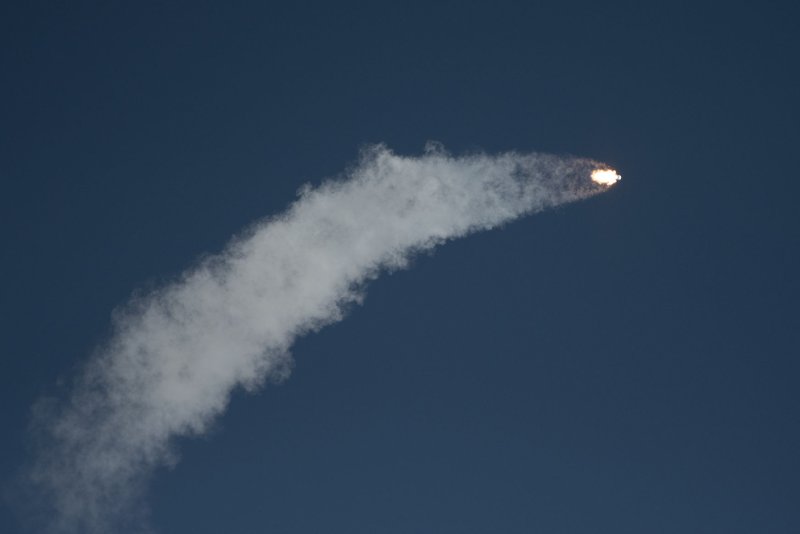A SpaceX Falcon 9 rocket lifts off from Cape Canaveral Air Force Station, Florida, on December 23, 2018, to launch a new GPS III series satellite for the US Air Force. File Photo by Joe Marino-Bill Cantrell/UPI |
License Photo
Jan. 9 (UPI) -- The United States will accelerate its space program to compete with China's, a senior Defense Department official said.
Vice President Mike Pence last year announced the U.S. military would create a sixth branch, the Space Force, by 2020 as part of a renewed focus on space exploration, as well as to meet concerns about the country's ability to defend assets in space.
While the U.S. military already is tasked with a variety of space responsibilities -- it operates the widely used GPS system, for example -- the Air Force Space Command also has stepped up preparations to defend space with its Space Flag series of exercises.
A major part of pushing forward with these efforts, Pentagon officials say, is to first create a Space Development Agency that will focus on defensive capabilities for space-based assets, as well as better global defenses against missile attacks.
"China is integrating certain new technologies and fielding those capabilities faster than the U.S.," Chris Shank, director of the Defense Department's Strategic Capabilities Office, told a conference of the American Institute of Aeronautics and Astronautics in San Diego on Tuesday. "That means we have to be more responsive. China had 39 launches [in 2018], the U.S. had 31, Russia had 20, Europe had eight, and [China] landed a robotic mission on the dark side of the moon -- a first."
He added, though, that the United States achieved a milestone of its own, a reference to NASA's New Horizons probe. The satellite flew toward the planet Pluto in December, and on New Year's Day sent photographs from four billion miles away from the Sun once it reached an asteroid in the Kuiper Belt. It is the farthest object ever explored in space.
Shank said the Defense Department is "committed to creating a Space Development Agency."
"That would be a joint organization to rapidly develop and field the next generation of space capabilities," Shank said.
The department finalized a 15-page report on organizing the Space Development Agency in August. It recommended consolidating current agencies for military purposes and the formation of "Combatant Commands."
It also proposed a U.S. Space Command, suggested by President Donald Trump in March 2018, "to lead the use of space assets in warfighting and accelerate integration of space capabilities into other warfighting forces."
The report acknowledged that "Russia and China perceive a need to offset any U.S. military advantage derived from military, civil, or commercial space systems and are increasingly considering attacks against satellite systems as part of their future warfare doctrine. Both will continue to pursue a full range of anti-satellite [ASAT] weapons as a means to reduce US military effectiveness."
"Some new Russian and Chinese ASAT weapons, including destructive systems, will probably complete development in the next several years. Both countries are advancing directed energy weapons technologies for the purpose of fielding ASAT systems," the report said
The Pentagon's detailed plan, which regards the Space Force as a new military branch with the same status as the Navy or the Air Force, was announced in August by Vice President Mike Pence.
Organization of the new Space Development Agency is under the authority of the Pentagon's Defense Advanced Research Projects Agency, which is responsible for the development of new technologies. DARPA's Tactical Technology Office is charged with development of key capabilities which include global surveillance for advanced missile targeting, warning of missile threats, deterrent capabilities and ground infrastructure.















